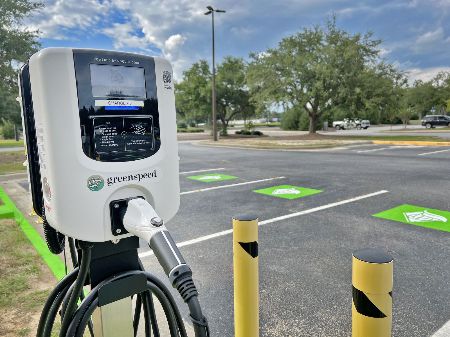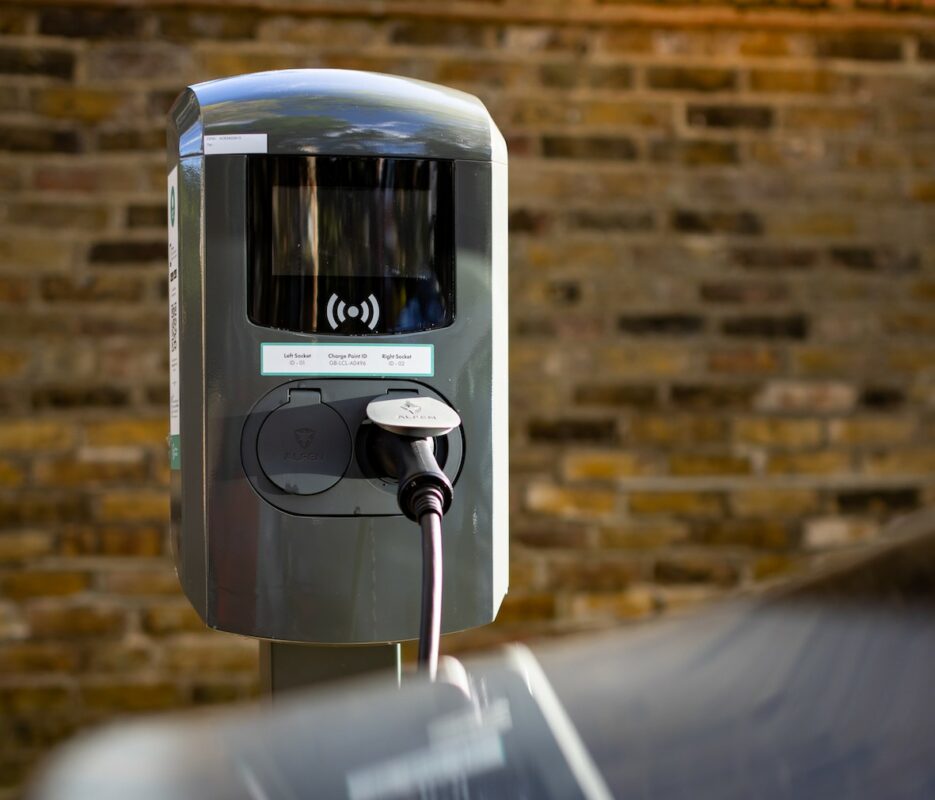Leading EV Charging Information: Secret Updates on Facilities and Development

Recent Advancements in Fast-Charging Technology

Additionally, innovations in battery innovation, including boosted thermal management systems and greater power density batteries, enhance fast-charging abilities. These advancements mitigate the risk of battery degradation throughout rapid charging, making certain long life and efficiency for EV owners.
In addition, the combination of clever billing solutions is boosting customer experience, making it possible for real-time monitoring and dynamic prices models. EV Charging news. This flexibility allows drivers to enhance charging expenses and times based on grid demand
As automakers continue to buy fast-charging networks, the collaboration between industry stakeholders is critical. Collaborations between billing terminal service providers and automotive makers are leading the way for comprehensive coverage, inevitably promoting an extra robust EV ecological community. These improvements are pivotal in supporting the change to lasting transport.
Federal Government Initiatives for Billing Development
Government campaigns play a crucial role in the expansion of electrical lorry (EV) charging framework, promoting the shift to lasting transport. Different government and state programs are being executed to enhance charging access, minimize the economic concern on consumers, and promote the fostering of electric lorries.
Significantly, the united state federal government has alloted significant financing with the Infrastructure Investment and Jobs Act, which sets aside $7.5 billion for EV billing network development across the nation. This funding is focused on releasing thousands of new billing stations, particularly in underserved locations, therefore dealing with range stress and anxiety amongst potential EV purchasers.
In addition, numerous states are enacting regulations to simplify the allowing procedure for charging station installments, which is vital for accelerating implementation. Incentives such as tax obligation credit ratings and rebates for both consumers and services are also being introduced to urge the setup of billing framework.
Furthermore, public-private partnerships are increasingly becoming an emphasis, leveraging exclusive investment to complement government financing. These efforts underscore a collaborative strategy necessary for developing a extensive and reliable EV billing network, ultimately adding to a greener and more lasting future.
Ingenious Battery Solutions Enhancing Performance
Transforming the landscape of electrical automobile (EV) technology, cutting-edge battery services are significantly boosting effectiveness and efficiency. Advances in battery chemistry, especially with lithium-sulfur and solid-state batteries, are causing boosted power thickness, which enables longer ranges and faster billing times. These brand-new battery types have the potential to outperform standard lithium-ion batteries by providing greater capacities while reducing weight, consequently enhancing overall lorry efficiency.
Moreover, developments in battery monitoring systems (BMS) are maximizing energy use and expanding battery lifespan. Smart formulas monitor battery wellness and efficiency, allowing real-time adjustments to charging and releasing processes. This not only boosts the effectiveness of the battery however additionally makes sure an extra sustainable and reliable energy source for EVs.
In addition, the combination of recycling innovations is attending to the ecological influence of battery manufacturing and disposal. Innovations in second-life applications for EV batteries are promoting their usage in energy storage space systems, contributing to a round economy.
As these cutting-edge battery solutions proceed to advance, they promise to transform the EV market, making electric automobiles extra easily accessible and appealing to a wider audience while sustaining worldwide sustainability objectives.

Collaboration Between Automakers and Billing Networks
Acknowledging the vital need for a robust billing framework, car manufacturers are increasingly teaming up with billing network service providers to improve the EV possession experience (EV Charging news). These collaborations aim to produce a smooth billing community that benefits customers and supports the shift to electric vehicles
Major automotive brands are signing up with forces with recognized charging networks to broaden their charging station insurance coverage, making sure chauffeurs have access to convenient and dependable billing options. Partnerships with networks like ChargePoint and Electrify America allow automakers to integrate billing options directly into their lorries' navigation systems, assisting customers to the nearest terminals and giving real-time accessibility updates.
Furthermore, these cooperations look here often result in the development of fast-charging modern technologies that substantially minimize the moment required to reenergize an EV. By pooling resources and know-how, automakers and billing networks can introduce much faster, producing remedies that fulfill the growing need for electric flexibility.
Additionally, joint campaigns may additionally cause even more standard billing methods, which can ease customer confusion and promote more comprehensive EV fostering. Generally, these tactical alliances are critical in constructing a user-friendly and effective billing infrastructure that fulfills the requirements of a broadening electric car market.
Challenges Facing EV Charging Facilities
As the electrical car market remains to expand, numerous challenges are surfacing that hinder the growth of a comprehensive charging framework. One of the primary challenges is the inadequate variety of charging stations, particularly in rural and underserved city locations. This gap produces array anxiousness amongst prospective EV customers, deterring them check my source from making the switch.
Additionally, the absence of standardization in charging innovation makes complex the infrastructure landscape. Variations in plug kinds and billing rates can produce confusion for individuals and enhance functional intricacies for billing network operators.
An additional pressing concern is the high cost related to the installation and upkeep of charging stations, which can be an obstacle for both private companies and public entities. Governing difficulties and zoning limitations can delay the release of charging facilities, hampering progress in broadening vital solutions. Resolving these obstacles will be crucial for cultivating a durable EV ecological community that sustains the shift to lasting transportation.
Conclusion
Finally, the continuous innovations in EV billing modern technology, supported by significant government efforts and cutting-edge battery solutions, are essential for the development and effectiveness of electric automobile framework. Cooperations in between car manufacturers and billing companies further enhance terminal coverage, dealing with the growing need for obtainable billing options. Regardless of challenges that persist within useful source the EV charging landscape, these developments indicate a positive trajectory in the direction of a much more lasting and effective electric lorry environment.
Developments in charging infrastructure have actually led to the growth of ultra-fast battery chargers capable of supplying up to 350 kW of power, dramatically reducing charging times. Variants in plug kinds and charging rates can create complication for customers and raise operational intricacies for charging network operators.In verdict, the ongoing improvements in EV charging modern technology, supported by substantial federal government initiatives and cutting-edge battery remedies, are important for the expansion and effectiveness of electrical lorry facilities. Partnerships in between automakers and charging companies additionally improve terminal insurance coverage, attending to the expanding demand for obtainable billing options. In spite of obstacles that persist within the EV charging landscape, these growths indicate a favorable trajectory in the direction of a more efficient and sustainable electrical vehicle ecological community.